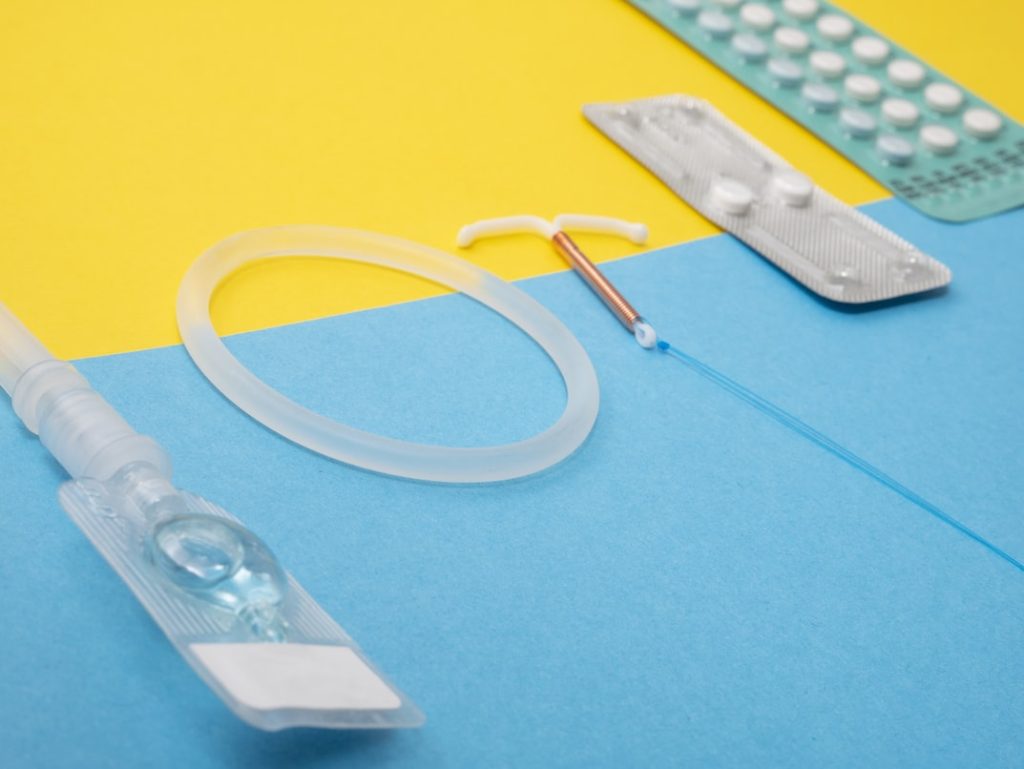
There is no cure for endometriosis yet!
When dealing with endometriosis, people often believe there is a cure, perhaps due to several available treatment options, including medications, acupuncture, and even hormone therapy for endometriosis.
However, it is important to note that hormone therapy for endometriosis is not a cure but one of the many ways to manage to live with the illness. The hormone therapy for endometriosis might help to reduce the symptoms caused by the disease, including severe pain, but it doesn’t mean it is risk-free or works for everybody.
For more than 25 years, I experienced the debilitating pain, fatigue, anemia, and mood swings that resulted from endometriosis. I was not diagnosed until I was 34 years old, but from the age of 17-28 years old, I was treated with hormone therapy by way of birth control pills.
While taking these birth control pills, my symptoms seemed to improve; however, the side effects of birth control and its impact on my fertility and undiagnosed endometriosis became more evident when I stopped taking the pills.
Two years after my diagnosis by way of abdominal laparoscopy and dilation and curettage (D&C). I required a total hysterectomy due to uncontrolled anemia caused by heavy bleeding related to endometriosis.
As a registered nurse, I know that hormone therapy can impact each person differently and is a personal decision, so I desire to provide an objective view on this matter.
Before deciding on this treatment option, you need to understand what hormone therapy for endometriosis is all about, how effective it is in managing endometriosis symptoms, the risks involved, and when best to start.
RELATED POSTS:

What is endometriosis?
Endometriosis is a chronic illness that occurs when there is an uncontrollable and abnormal growth of endometrial-like tissue outside the uterus. The cells of the endometrial tissue growing outside of the uterus are said to be closely similar to the cells of the endometrium but are not the same.
Endometrial tissue is the tissue that lines up the wall of the uterus, generally referred to as the endometrium. When a woman experiences a new cycle, a new endometrium grows on the inner wall of the uterus. When this endometrium grows outside the uterus, it is called endometriosis.
There is no exact known cause of endometriosis, and there is no cure for this condition yet. Sadly, 1 in every 10 women during their reproductive age has endometriosis, and these women often experience severe pain, especially during their menstrual period.
Retrograde menstruation, a situation where the menstrual blood flows backward into the abdominal cavity, is a suspected cause of endometriosis, but not much has been proven. Also, the endometrial tissue growing outside of the uterus, although not cancerous, can cause lesions, scarring, and adhesion to the affected organs.
The most affected organs are the ones around the pelvic area and reproductive organs, including the ovaries and fallopian tubes. Endometriosis does not have a cure but can be managed effectively.
Symptoms of endometriosis
Something about endometriosis is that it can be difficult to diagnose, mainly when there are no prior indicators for your doctor to suspect it. Getting the proper endometriosis diagnosis can take as much as six (6) years; that’s how serious it is.
The difficulty in diagnosis might have to do with the fact that there is no exact cause. Also, endometriosis symptoms are similar to more common medical conditions like irritable bowel syndrome (IBS), ovarian cysts, and pelvic inflammatory diseases.
Also, the symptoms are not generic because they might vary for each patient.
Here are some symptoms of endometriosis:
- Painful periods
- Severe abdominal cramps
- Blood in urine or stool
- Pelvic pain
- Bloating
- Lower back pain
- Painful sex
- Prolonged periods
- Heavy periods
- Spotting in between menstrual cycles
- Fatigue
- Infertility
The results of hormone therapy for endometriosis
Hormone therapy for endometriosis involves using hormones in treating endometriosis, which can effectively reduce or eliminate the symptoms of endometriosis but not the disease itself.
Hormones trigger endometrial symptoms because they are closely linked with the woman’s menstrual cycle. In fact, most of these hormone therapies for endometriosis either keep the woman in a continuous pregnancy or menopausal state.
The release of hormones causes the thickness, breakage, and bleeding of the endometrial tissue, which causes the manifestation of most endometrial symptoms. Using hormones as a treatment option prevents the changes that would otherwise have happened to the endometrial tissue (thickening, breakage, and bleeding). Also, it prevents the implantation of new endometrial tissue to organs outside of the uterus with each menstrual cycle.
This is why the result of hormone therapy for endometriosis has shown more effectiveness than other treatment options.
Although hormone therapy for endometriosis has seen some hopeful results, some women are still skeptical, which is understandable because you do not want to worsen your health. No medical treatments are 100% safe as there will always be the possibility (no matter how little) of a failure; however, hormone therapy for endometriosis is safest when it is recommended and administered according to your doctor’s advice.
When you stop your treatments, the symptoms will start again because hormone treatment is not a permanent cure for endometriosis. Also, if you are considering getting pregnant, it is best not to use hormone treatments because they will interfere with your goal.

How do you take hormones?
As some think, hormone therapy for endometriosis does not involve taking shots or getting an IV line. There are different hormone treatment methods; your doctor will educate you on each. You can also ask for more details from your chronic illness support group and hear from others with firsthand experience.
Here are the ways you can do your hormone therapy for endometriosis:
• Oral contraceptives
You can use combined oral contraceptives as a treatment option. This combined oral contraceptive contains estrogen and progesterone, which stops the release of an egg from the ovary and reduces the amount of bleeding you experience. You can use it for an extended period, and while there might be some side effects, you can take your time to find a brand that works best for you.
You can also use a single pill, e.g., progesterone-only pills, which can stop ovulation.
• Vaginal ring
This hormone treatment option can be used for an extended time frame. The vaginal ring is a thin, flexible rubber ring inserted and fits into the vagina, releasing estrogen and progesterone into the vagina when in place. It is replaced every three (3) weeks with a new one and does not interfere with sexual activities when properly inserted.
• Birth control patch
This looks like a bandage but is a small piece of plastic that releases estrogen and progesterone into the vagina. Unlike the vaginal ring, the birth control patch is replaced every week; this patch can reduce the number of times you menstruate to as little as once a year.
• Implants
This hormone therapy for endometriosis involves just the hormone—progesterone. Hormonal implants like Nexplanon is a tiny tube that is usually inserted underneath the skin in the upper arm and can last up to three (3) years. It prevents pregnancy and also reduces the sizes of lesions produced by endometriosis.
• Gonadotropin-releasing hormones agonists & antagonists
Gonadotropin-releasing hormones (GnRH) agonists and antagonists are a last-resort hormonal treatment. This treatment stops the brain’s pituitary gland from passing a message to the ovaries to make estrogen and progesterone. It means you won’t be able to have your period, which puts you in an artificial menopausal state.
It is advisable to add small doses of progestin or estrogen to reduce the symptoms of menopause that will follow this treatment.
• Progestin
Progestin can stop your periods and prevent the growth of new implants. Progestin can be embedded in certain intrauterine devices (IUDs), implants, injections, and pills.
• Aromatase inhibitors
Aromatase inhibitors are drugs that reduce the amount of estrogen in your body and are also effective in treating endometriosis. Depending on the severity of your symptoms, your doctor might prescribe aromatase inhibitors alongside combined hormone contraceptives or progestin.
Side effects of hormone therapy for endometriosis
There are no medications without side effects, including hormone therapy for endometriosis. However, the severity and frequency can vary based on your body’s makeup.
Here are some side effects of hormone therapy for endometriosis:
- Breast tenderness
- Skin irritation
- Blood clots
- Weight gain
- Mood swings
- Irregular periods
- Vaginal dryness
- Osteoporosis
- Bone density loss
- Hair thinning
- Depression
- Stroke
- Infertility

Other treatment options for endometriosis
Some people are still reserved about taking hormones because of the possible side effects. If you also think that way, you can try several alternatives to manage your symptoms.
Here are some alternatives to hormone therapy for endometriosis:
• Diet
This method might not be as effective as hormone treatment, and little is known about the connection between diet and endometriosis. However, an anti-inflammatory diet might help reduce inflammation and pelvic pain.
• Pain management
This involves using pain relief drugs like NSAIDs, which might help reduce the pain and swelling.
• Acupuncture
Acupuncture can also be effective in treating endometriosis by helping to relax your muscles and increase blood flow. It can help to reduce the pain and cramping associated with endometriosis.
• Specialized exercises
While this might not be effective for everyone, exercise can help relieve symptoms, boost your mood, and even help to strengthen your pelvic floor for women with scar tissues and adhesions.
Exercises like yoga, pilates, tai chi, swimming, cycling, and even walking can help.
• Surgery
Surgery is one of the most effective methods of treating endometriosis, and there are different surgical options to consider, including laparoscopy, laparotomy, hysterectomy, endometrial ablation, oophorectomy, dilation, and curettage.
Discuss with your doctor, and select a surgical option that is best for you.
Treatment of endometriosis takes different forms because there is no cure for the disease yet. To manage endometriosis, doctors offer various treatment options to relieve the pain or other symptoms, remove the endometrial tissues causing the pain, improve the rate or possibility of getting pregnant, or reduce the chance of a recurrence.
These treatment options are offered so that you know what you are getting; you can track the disease to know if the treatment option is working. To decide on the treatment option you want, you have to consider several factors, including what you want and how you feel.

Conclusion
For some, hormone therapy for endometriosis can be an effective option to manage the symptoms of endometriosis. Still, since it will prevent pregnancy, you should consider another alternative if you plan to have a child.
This is because hormone therapy for endometriosis either puts you in a constant state of menopause or a constant state of pregnancy. Although these can be reversed, you don’t want to take that risk.
Consider all other options with your doctor, including natural and holistic alternatives, such as anti-inflammatory nutrition, specialized exercises, acupuncture, and more.
Hormone therapy for endometriosis involves reducing or stopping the level of estrogen released into the body. Because estrogen isn’t released into the body, it prevents the growth of endometrial tissue and stops the symptoms you feel.
Before deciding on any of the endometriosis treatment options, be sure to carry out proper research and discuss extensively with your doctor before making a choice.
Do you have endometriosis or know someone who does? What effective treatment options are you aware of?
READ ALSO: Easy tips for living with endometriosis | causes & types




0 Comments